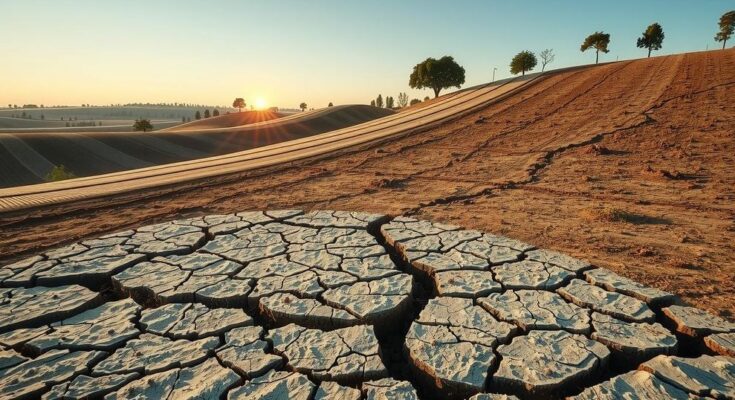The Soil Atlas Health Report 2025 reveals that only 20% of Kenya’s soil is fit for farming, with serious implications for food security. The country loses 26 tons of soil per hectare annually, primarily due to erosion. Degradation is exacerbated by overgrazing, deforestation, and poor irrigation practices, leading to high salinity and nutrient loss, endangering agricultural output and increasing dependency on food imports.
A recent Soil Atlas Health Report 2025 has disclosed that merely 20 percent of Kenya’s soil is fit for agricultural production, posing significant challenges for the country’s food security. This alarming figure indicates that Kenya is losing an average of 26 tons of soil per hectare each year due to water-induced erosion, with some regions facing even greater losses, surpassing 90 tons annually.
Soil quality is crucial for ensuring food and nutritional security, as it plays a critical role in combating climate change by storing vast amounts of carbon. The report emphasizes that soils contain more carbon than both vegetation and the atmosphere combined, highlighting their importance in ecological balance.
The crisis of soil degradation is particularly severe in East Africa, where over 40 percent of soils are reported as degraded. Such degradation threatens the agricultural foundations and resilience of the entire region and is driven by a combination of human activities and natural factors.
Human-induced problems, such as overgrazing, unsustainable agricultural practices, and deforestation, alongside the impacts of erratic weather patterns, are significant contributors to the decline in soil quality. Under dry conditions, overgrazing can strip vegetation from the land, leaving the soil unprotected and susceptible to erosion and compaction. This deterioration diminishes the soil’s capacity to retain water and support plant life.
Additionally, salinization, or the accumulation of salts in the soil, exacerbates the issue, particularly in arid and semi-arid areas. This problem is intensified by poor irrigation techniques, such as using water of inferior quality. As water evaporates, it leaves salts behind, which can gradually reach harmful levels.
The report indicates that approximately 40 percent of irrigated lands in Kenya suffer from salinity, complicating the nation’s ability to meet agricultural demands. Furthermore, nutrient deficiency ranks high on the list of challenges, with over 85 percent of soils lacking essential nutrients, largely due to continuous farming without adequate replenishment, increasing soil acidity, and ineffective management practices.
Alarmingly, the report predicts that degraded soils could lead to a potential 30 percent reduction in agricultural productivity, thereby increasing reliance on imported food. This concern is corroborated by findings from the National Disaster Management Authority (NDMA), which warned that roughly 2.8 million individuals might face severe food insecurity from April to June 2026 amid unfavorable weather conditions.
In summary, the findings from the Soil Atlas Health Report 2025 highlight a critical situation concerning soil health in Kenya, revealing that only 20 percent is suitable for farming. The compounding issues of erosion, salinization, and nutrient depletion threaten agricultural productivity and food security. Action must be taken to address soil degradation to safeguard the future of food production in Kenya and East Africa as a whole.
Original Source: www.kenyans.co.ke




